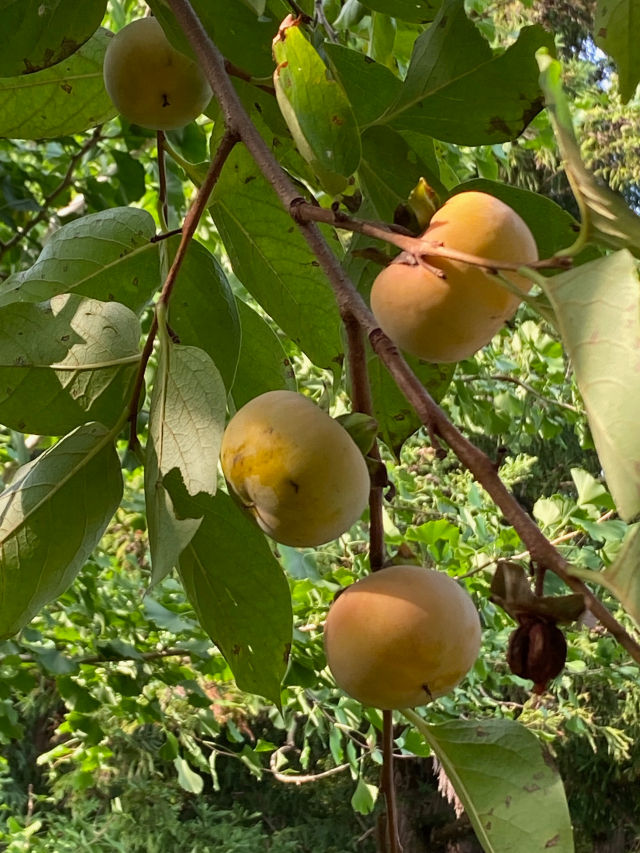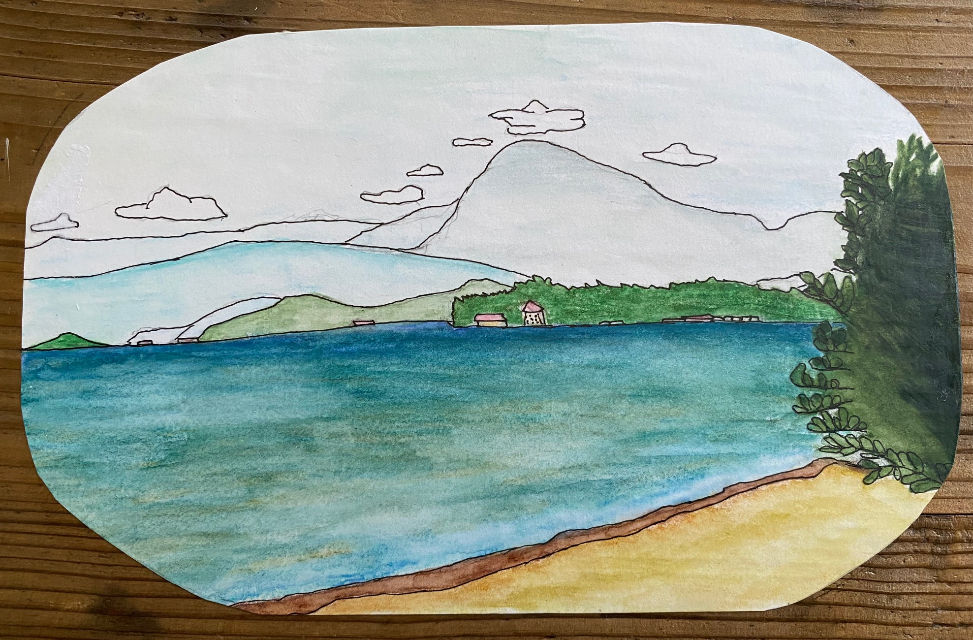A Tale of Myoga
- Rebecca Otowa
- Aug 26, 2020
- 4 min read

In this time of COVID-19, it is rare to have somewhere to go and really go there. Thus, I was happy to be sitting once more, after an absence of several years, at the dining table of a friend who lives a 2-hour drive away across Lake Biwa. My husband and I had donated some household goods to one of her neighbors. We got to stay at her little pension and listen to the nearby river chuckling over stones at night. And we got to sample various types of cuisine containing myoga or Japanese ginger.
This plant, Zingiber mioga, looks like knee-high shrub bamboo (sasa) and the buds, which are the part that is eaten, are harvested from close to the ground, often with queer lemon-yellow tendrils of flowers coming out of them. They are little reddish-purple buds about 5 cm long, somewhat like small onions to look at, and they have a kind of oniony, layered construction too. When chopped, they resemble purple shallots. They are satisfyingly crunchy, and the flavor has a strange little bite similar to that of cilantro. Myoga is common as a garnish for summer dishes like cold noodles, and can also be cooked as tempura, stewed with meat, or pickled.
This plant has a long history in Asia, and having wended its way across China and Korea, it ended up as a well-known Japanese flavor. My friend’s house and village has myoga growing everywhere, and they eat it regularly. But, I told my friend before we visited, my husband hates myoga so please provide other things as well.
My husband has made no secret of his dislike for this plant, and I have spent the past 30-something years avoiding it in the kitchen, even though I quite like it myself. So imagine my surprise when at the dinner table, he blandly confessed he had never tasted it! In Japanese there is an expression for dislike of something you have never tasted, tabezu-girai (they have an expression for EVERYTHING in Japanese). All these years, while I imagined he disliked the distinctive flavor or aroma of myoga, it was just tabezu-girai. Why have you never tasted it? I asked him. He replied that as a young boy, he heard that eating myoga would affect the memory – so he vowed never to eat it.
I have experience of how strong his vows can be, but this was kind of extreme even for him. We spent the rest of the evening tasting myoga in various delicious dishes, and talking about this piece of folklore, that myoga makes you forgetful (or baka, “stupid”), which is known to every Japanese person of a certain age. It seemed kind of random so we researched it a little. In the process we found a very cute and interesting woodblock print by Hiroshige (One Hundred Views of Edo) of the area of Shinjuku in Tokyo as seen through the back legs of several horses which were wearing little woven sandals (waraji) on their hoofs. (See the picture accompanying this blog.) My friend found out that in the 16th century, there were no iron horseshoes, and it was found that myoga stalks were the strongest material to use. Many people throughout Japan were set to making these sandals for horses out of the myoga stalks. Of course, the myoga buds, which are eaten, grow into the stalks, so “they” (I’m guessing the powers that be) didn’t want people to eat this valuable resource. They dredged up an old story from early Buddhist times, of a disciple of Sakyamuni who was said to be very forgetful, and when he died, myoga were found growing on his grave. This was somehow turned around to claim that myoga actually caused forgetfulness, which discouraged people from eating the myoga that were destined for the hooves of horses. Either by decree or gradually, the story spread that eating myoga makes people stupid. And it was strong enough to make a young boy in early 1960s rural Japan decide that myoga wasn’t for him.
This is the kind of thing that crops up all the time in an older culture. There are lots of sayings like this in Japan, many with an ulterior motive, as this one had. For example, it is said that eggplant harvested in autumn should not be given to a daughter-in-law (akinasu wa yome ni kuwasuna). The scientific explanation for this is that eggplant, as a very yin vegetable, is cooling to the body, and this was thought to make it difficult for the daughter-in-law to get pregnant. A darker meaning is that mean mothers-in-law would withhold this very delicious food from their daughters-in-law; it was thought to be wasted on them.
Another is the very old maxim that eating seaweed makes your hair black. This is reminiscent of one I was told in the U.S. as a child, “Breadcrusts make your hair curly”. I found out that in Europe long ago, curly hair was associated with rich people, so the meaning might be that if you eat all your crusts you will be inviting a rich future. The implication being, perhaps, that poor children need to eat all their bread in order to change their luck – a ploy of parents to get their children, in a time when starvation was common, to avoid wasting food? I imagine rich (curly-haired) children weren’t hounded to eat their bread crusts. How many of these children who dutifully ate their crusts went on to become curly-haired i.e. rich? I remember being rather confused by this when I was young, and arguing with my mother that my hair was wavy already, so I didn’t need to eat the crusts! The Japanese version has always reminded me of paintings of Heian ladies with their flowing black hair. Maybe very black, luxuriant hair was also considered a sign of riches or breeding, and thus parents would persuade their children to eat seaweed to acquire this desirable trait.
I am sure that every culture has these kinds of maxims and proverbs that seem unexplainable on the surface, but if you delve into the story a little, you will get some kind of explanation, either scientific or socio-political. It reminds me of Mother Goose nursery rhymes, many of which are based on political events of the day. These are the kinds of things one encounters in a language once one is swimming out deep.
Meanwhile, I guess myoga is back on the menu at our house.



I love myoga, even more so now I have a bit of historical and "hubby" context ☺️
I always enjoy your perspective on things! And I am a huge fan of Hiroshige, so I love the print, too!
What an interesting and beautiful woodblock print featuring myoga horseshoes.
Sounds like an interesting gastronomical folkloric tale. I imagine there must be gourmets.
sounds like an interesting gastrohttps://www.catalannews.com/life-style/item/onions-on-fire-the-internationalisation-of-calcotsnomical tale in folklore. One wants to relate to it. I remember when in Spain an Irish friend drove us into the mountains in Catalunya. There we met with the locals and I with very naive eyes tasted “calicots”, a famous delicacy of that particular area. I believe they are spring onions. That memory stayed with me and especially they provided us with bibs to keep the sauces from soiling our clothes. Of course there was the réminiscence of two charming spaniards eager to start a conversation, not shy at all, with their Iberian eyes upon us “young attractive foreigners”://www.catalannews.com/life-style/item/onions-on-fire-the-internationalisation-of-calcot